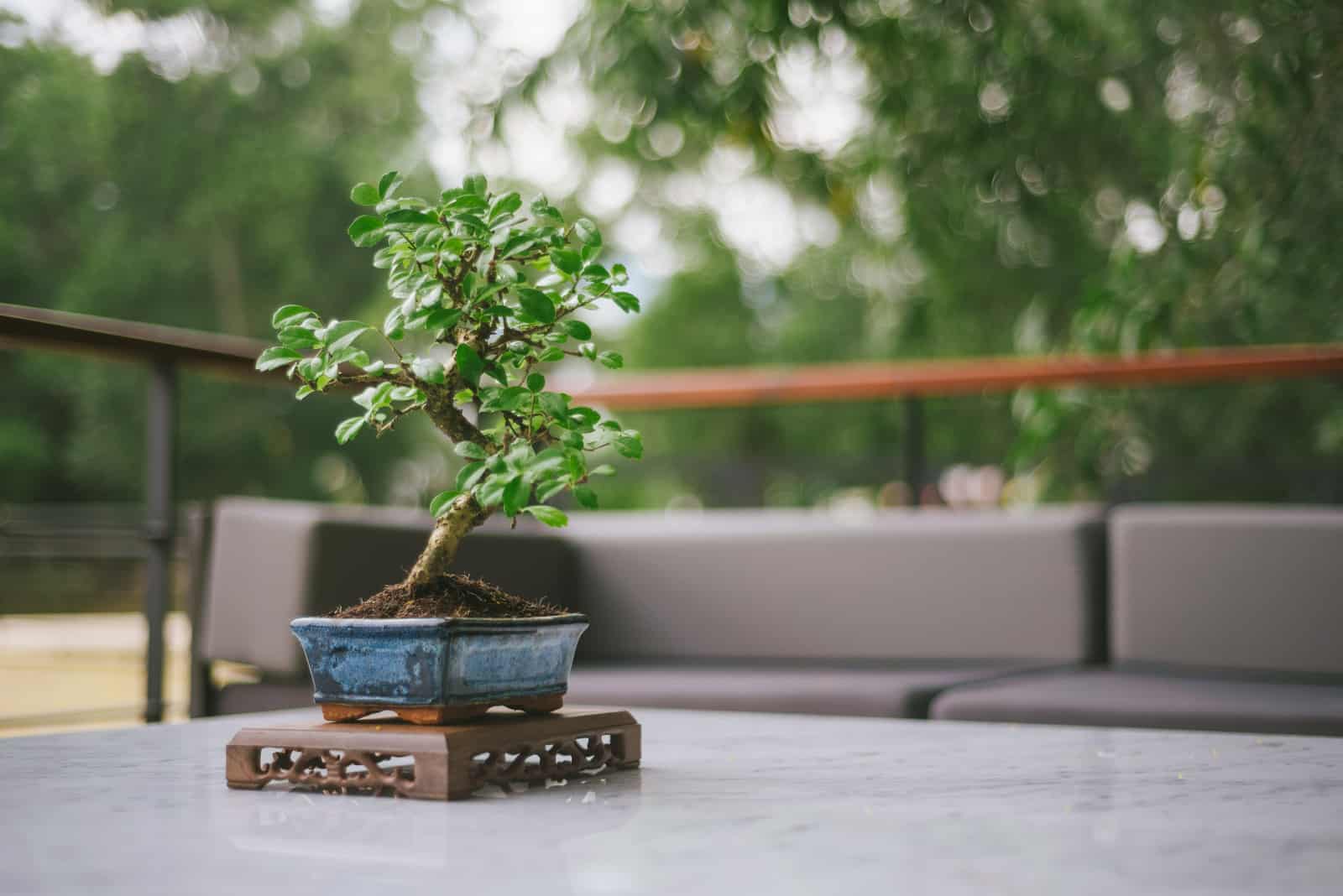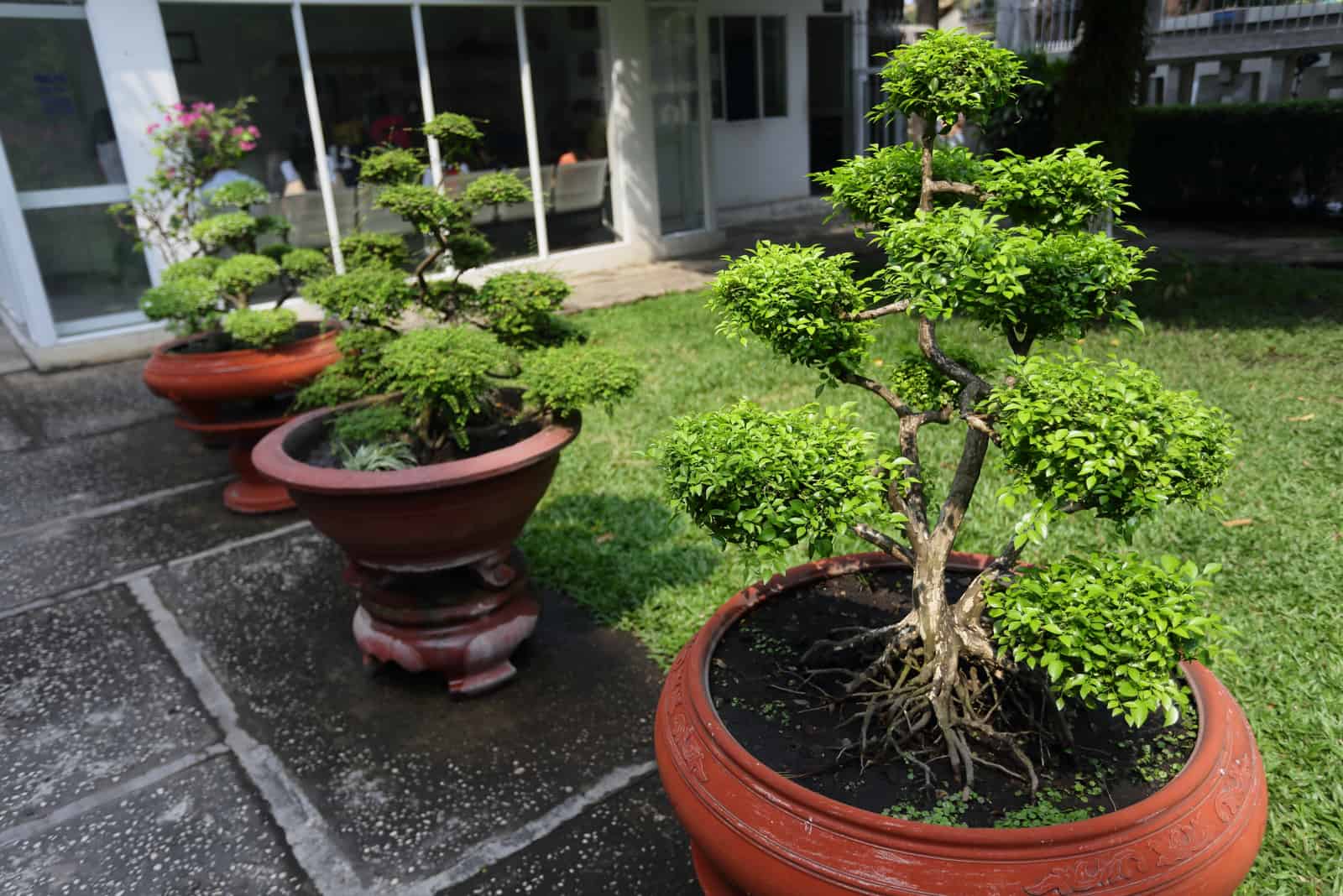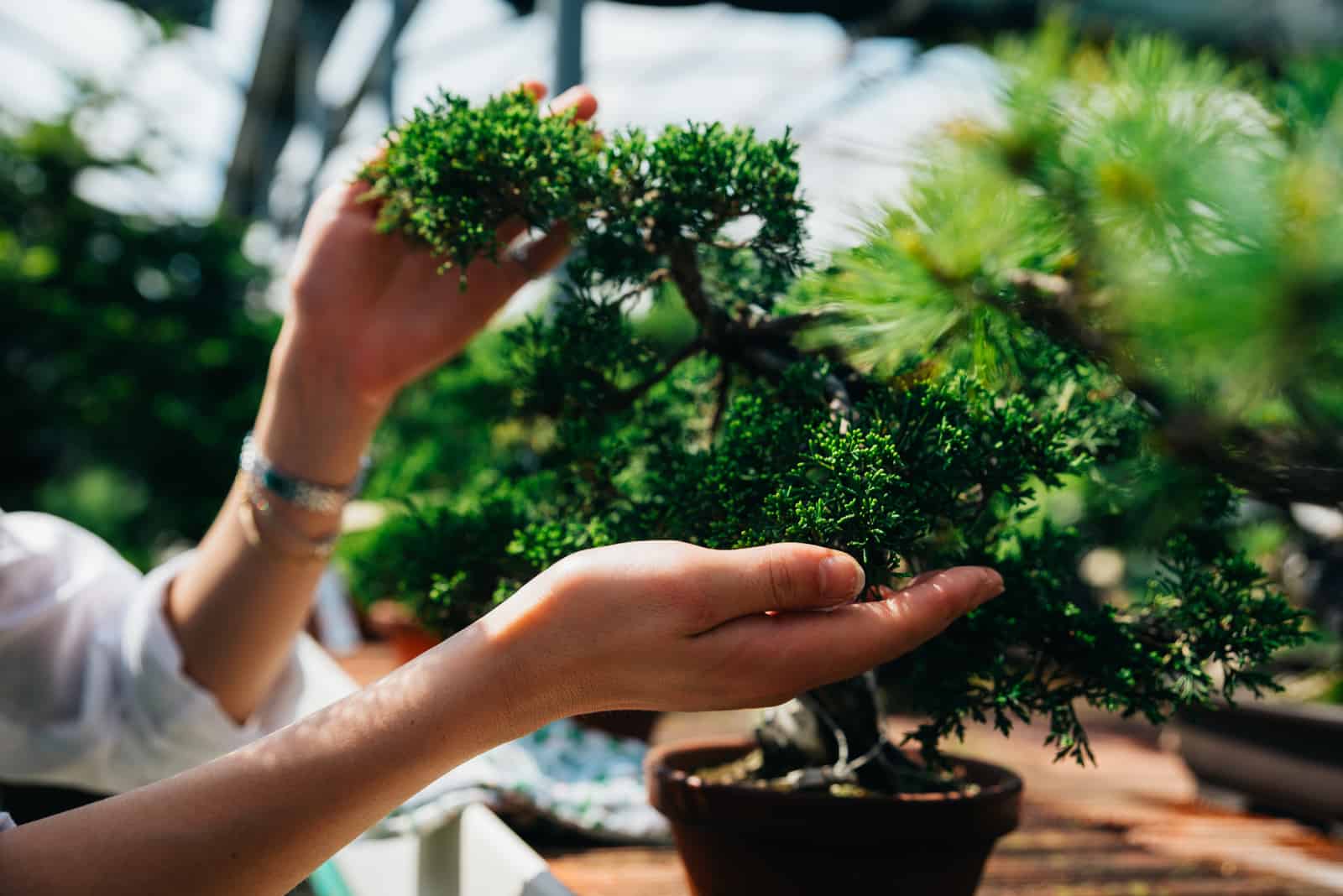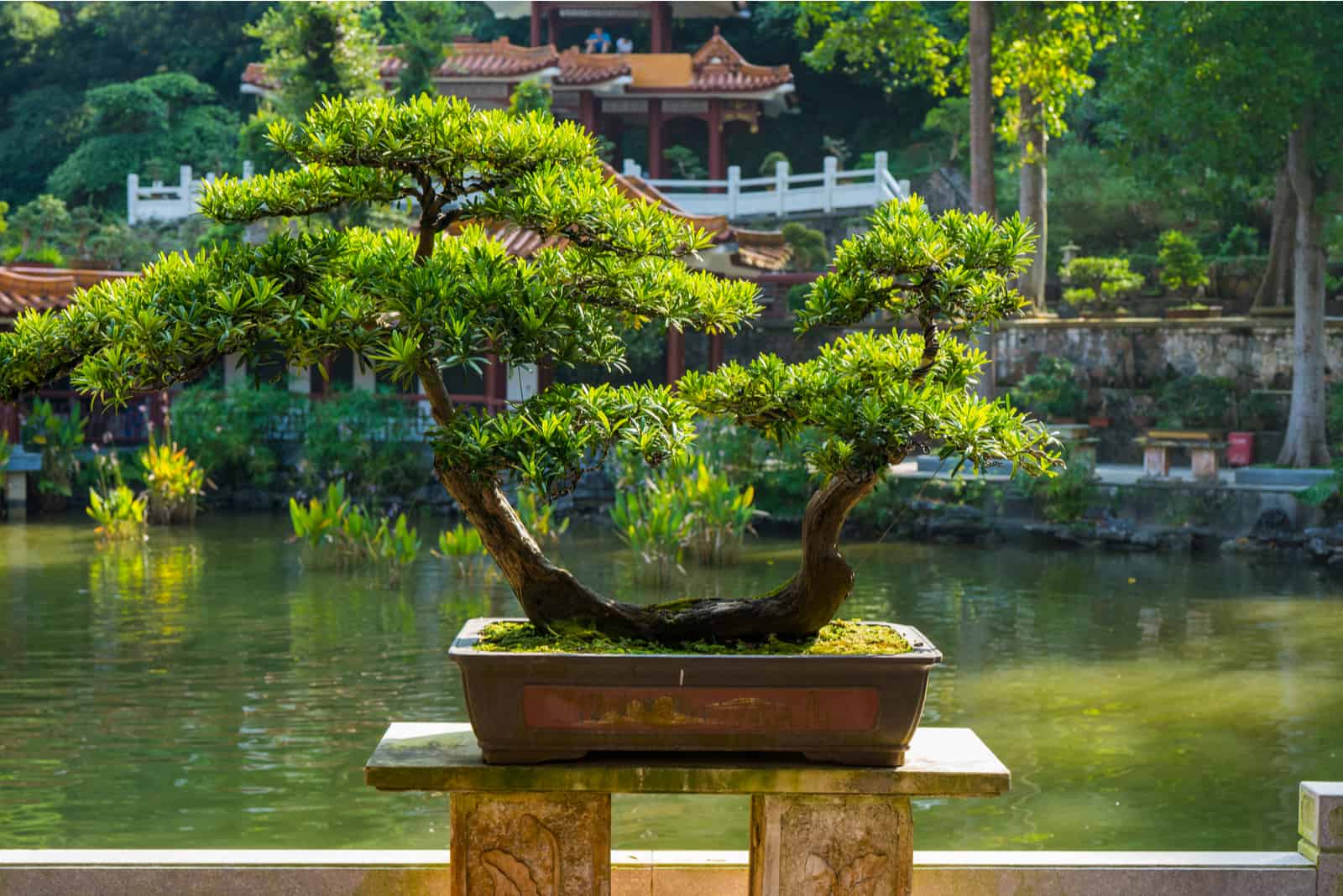All gardeners dream of growing their own bonsai tree; however, even for experienced ones, it can be a challenging task.
The word ”bonsai” comes from the Japanese, and means, planted in a container. It refers to the technique of “artificial dwarfing,” which prevents huge plant specimens, mainly trees, from attaining their natural size.
If you decide to grow a bonsai tree, you’ll need to know how long it takes for a bonsai tree to grow.
Let’s find out!
How Long Does It Take For Bonsai Tree To Grow?
You’ll need to wait a little bit longer for your bonsai tree to grow compared to other normal trees. If you decide to grow a bonsai tree as an indoor plant from seed, you’ll have to wait for 10 to 15 years.
Don’t be disappointed if you see your bonsai grow only slowly and if it doesn’t resemble a bonsai tree for the first five years. Bonsai trees need four to five years to be large enough for you to start pruning or modifying it to get your desired shape.
Let’s get into the details!
Time Needed To Grow A Bonsai Tree From Seed
The key to growing a bonsai lies in your patience. If you decide to grow a bonsai from seed, bear in mind that it’s going to be a long, but rewarding, experience.
Growing a bonsai from seed is challenging in another way too: getting the plant from seed to tree is extremely difficult.
Bonsai seeds have a poor germination rate, take too long to sprout, and are susceptible to any changes in watering habits, temperature, and other factors.
It’s a long and undoubtedly complicated process, but the prize is big; you’ll see your bonsai growing from the very beginning, and I assure you, there’s no better experience in the gardening world.
Started Bonsai Tree
If you don’t want to wait the entire five years to do anything with your bonsai tree, or if you’re a beginner grower, you might want to start with a pre-grown bonsai.
Some gardeners may think this is cheating. However, growing a bonsai tree that someone else has already begun is a good option if you’re not sure what you’re doing – and, in the end, will it really matter who started the seed by the time your tree is ten or eleven years old?
How Long Does A Bonsai Tree Live?
Whether establishing a bonsai tree from seed or inheriting one from a friend, you might be curious about how long they survive. The answer is, that it depends.
The sort of bonsai tree you plant, from a Desert Rose to a Jacaranda mimosifolia, significantly impacts how long it lives.
Examine your bonsai carefully when you first acquire it. How well has it been looked after? Has it been adequately watered? Does it appear to be in good health? This will offer you a good idea of its lifespan and how long it will take you to mature your bonsai.
The average bonsai tree takes ten to fifteen years to mature; however, some might take up to thirty years.
If that sounds like a long time, it is – but remember, a typical bonsai can live for hundreds of years if its healthy.
This is way longer than humans live, and most bonsai trees die after their growers die, as it’s hard to keep a bonsai healthy.
Learning how to trim, fertilize, water, and generally care for your delicate bonsai tree is crucial.
Fastest Growing Bonsai Tree Species
The fastest-growing species of Bonsai are the Juniper Bonsai, Japanese Maple Tree, Water Jasmine, Peepal Tree, and Chinese Elm.
Juniper Bonsai: A Juniper Bonsai can grow up to four inches each year, which is far quicker than many other bonsai varieties. The disadvantage to this variety is that they don’t enjoy being outside in the winter, so you’ll need to keep it indoors.
Japanese Maple Tree: Because of their brightly colored leaves and the simplicity of their care needs, Japanese maples are among the most spectacular types of trees available that are grown as bonsai plants. They can grow up to four inches per year.
Water Jasmine: The Water Jasmine Bonsai Tree is a tropical plant that thrives in hot, humid climates. It is mainly planted for its lovely scented, white blooms. It can withstand a lot of pruning and is quite simple to style. Sacred Buddhist is one of the frequent names used for this tree, as it is sacred to Buddhists. It’s ideal for use inside.
Peepal Tree (Ficus Religiosa): The Peepal is a famous tree in India that offers a variety of medicinal and health benefits. If you wish to maintain it inside, you can simply do so by training it into a bonsai shape.
Chinese Elm: This variety may grow to be a massive tree in its natural habitat, reaching heights of up to 80 feet. It has beautiful branch ramification and tiny leaves, making it an excellent bonsai plant. It can grow in various soil types and favors wet, well-drained conditions.
How Can I Make My Bonsai Tree Grow Faster?
Before I say anything else, any tips for growing bonsai faster still won’t make your bonsai grow in two years.
You should meet its requirements if you want your bonsai to have a slightly faster growth rate. For example, first, you should find a species with a naturally faster growth rate. You can also make your bonsai grow faster by imitating the conditions of their natural habitat.
Thickening the trunk, repotting, and fertilizing are also ways to improve growth.
However, the most important thing is to help your bonsai grow healthily and thrive. I know that it takes time but trust me, it’s worth it!
Let’s see what you can do to make your bonsai grow faster.
Choose A Fast Growing Species
It may sound obvious, but because the growth speed is so dependent on the sort of tree you have, the simplest way to acquire the fast growth of bonsai trees is to select a fast-growing species.
Evergreen, deciduous, coniferous (White Pine), and succulent trees are some of the most well-known, fast-growing tree varieties.
For example, a Chinese Elm takes about fifteen years to reach its full size.
You have a wide variety of trees to pick from, but you must consider where they will be planted. Some are more sensitive to colder areas or demand more care and attention than others, so be sure you select the best option!
Proper Care
Each plant thrives in different conditions, and a bonsai isn’t an exception. However, when compared to other plants, a bonsai is a little bit fussy.
Their care requirements also depend on the type of bonsai.
Here’s a short bonsai tree care guide to help you take proper care of your bonsai.
Light And Humidity
If you’re bringing your bonsai indoors for the winter, make sure it gets plenty of natural light. Even though there are fewer hours of sunshine in the winter, the intensity of the sunlight outside is still significantly brighter than it is inside.
The ideal option is to place it in a bright window, giving it several hours of sunlight. Avoid a drafty window if your bonsai is tropical or subtropical, since the cold may harm the leaves.
Bonsai trees prefer environments with high humidities.
Temperature And Watering
Bonsais require a temperature range of 65 °F to 75 °F. The temperature should be between 55 °F and 60 °F (13 °C and 16 °C) at night.
The temperature should be kept between 50 °F and 70 °F (10 °C and 21 °C) throughout the winter months.
Different temperatures affect the bonsai roots. You must keep them from becoming too dry in the summer and too chilly in the winter.
Water makes up at least 55% of most bonsai plants. And at least 75% of the tree’s leaves are made entirely of water.
Stick your finger in the dirt approximately one to two inches deep to determine when to water your tree. Examine the soil to see if it is dry or still damp.
Soil
The soil for your bonsai should consist of akadama clay (sifted), lava rocks, and pumice.
You have to use proper soil or you’ll end up with a dead bonsai very quickly.
Regular potting soil doesn’t work for bonsais.
Pruning And Shaping
Bonsai trees must be pruned on a regular basis to keep them small and compact. Maintenance pruning and structural pruning are the two most prevalent types of pruning.
To achieve the desired shape for your tree, you should prune the buds and branches on a regular basis.
Thicken The Trunk
Bonsai trees require a strong core to support whatever is above them, in this instance, their leaves and branches.
This core is crucial to the tree’s general health because it transports nutrients and water throughout the system and removes carbon from its foliage.
There are various trunk development procedures to follow. However, they are not recommended for beginners.
Merging
Instead of using an existing bonsai tree, this method involves using many saplings tied together, as they grow and finally merge into one plant!
When fast-growing trees, like pine or spruce, are paired, this unusual procedure can be completed in a matter of months.
Splitting
Simply split your bonsai along the middle, with wires on either side to prevent them from reconnecting as they grow past each other again.
When done correctly, this method gives instant results and takes up less room because there are now two little trees instead of one large one!
A thick trunk means your bonsai will grow faster.
Trim The Roots
In order to have a healthy life in a shallow pot, bonsai plants require some footwork.
Their roots will continue to develop in their quest for more water and nutrients, due to their small pot’s limited storage capacity.
A bonsai’s roots will grow in one direction in a small pot. If the tree is not pruned, the pot will get saturated with roots, and the soil will dry up much faster. That’s why it’s critical to keep the plant’s roots trimmed to guarantee it stays healthy and can continue growing rapidly. If the plant’s health deteriorates, this may slow down its growth.
These plants grow slower in fall and winter, so it’s best to prune them then. If you prune them during the ‘real’ growing season (early spring to early fall), you may risk your plant suffering from shock.
On the other hand, pruning in fall and winter will reduce the risk of stress.
If you are a beginner, this procedure is really simple. Here are the steps.
1. Remove your bonsai from its container and remove the excess bonsai soil from the roots with a brush or by using your hands.
2. Examine the tree’s base and start cutting any massive, thick roots that you find. The larger roots should be removed from your bonsai tree. Lots of little, thin roots are ideal, since they are more efficient at absorbing water. Trim the roots all over so that the cluster of roots can fit into its new container without folding over.
3. Water your bonsai. When performing root cutting on a bonsai tree, the tree must be thoroughly hydrated right away to aid the shock. One strategy to make a bonsai tree grow quicker is to prune the roots on a regular basis.
Repotting
The size of the bonsai pot and the species of tree will dictate how frequently a bonsai needs to be repotted.
A small container will slow down bonsai tree growth.
Expect to repot a fast-growing tree every two years. You will need to repot your bonsai less frequently as the tree becomes older.
Every three to five years, an older tree may require repotting.
When it comes to repotting bonsai plants, there is no need to follow a strict timetable. Examine the roots instead. You can either prune the roots, or maintain them and move the bonsai plant to a larger pot if the roots start to create a circle around the root system.
On the other hand, if you notice changes like the discoloration of the leaves and the roots, you might want to repot your bonsai as it may suffer from overwatering.
Choose a larger pot with drainage holes for your indoor bonsai.
Fertilizing
I assume you know that plants need nutrients to be healthy and thrive. Due to the limited root structure, bonsais don’t have enough space to get oxygen and nutrients. So, your bonsai will need additional food, which means you’ll need to fertilize it.
Fertilizing will provide your bonsai with the vitamins and minerals it requires to turn water and carbon dioxide into food. Regular fertilizing will prevent your bonsai from growing thin branches and keeping its miniature size.
The NPK value of high-quality bonsai fertilizers will help gardeners understand the nutrient composition and choose the best brand for their tree.
A bonsai plant will require a lot of fertilizer during its growing season, due to the limited room in its container. You must feed your bonsai on a regular basis if you want to learn how to make a bonsai tree grow quicker with fertilizer.
Be prepared to feed your bonsai once a week during the growing season. If you notice your bonsai’s growth rate slowing in the late summer, it’s time to cut back to once-a-month feedings.
Fun Facts About Bonsai Trees
Many people ask themselves what bonsai is, and don’t know about the origin of this tree. Despite the fact that the word ‘Bon-sai’ is Japanese, the art it describes is Chinese. By 700 AD, the Chinese had perfected the practice of ‘pun-sai,’ a technique for growing dwarf trees in containers using unique techniques.
The oldest bonsai: Bonsai enthusiasts agree that the oldest bonsai is the Ficus Bonsai Tree, which is believed to be one thousand years old. This type of tree was discovered in Crespi, Italy, and is on exhibit in the Crespi Italian Bonsai Museum.
It was born in Asia, specifically China, and was later taken care of by a Japanese master before being given to its current Italian owner, Luigi Crespo, who proudly displays it outside for all to see.
Another member of the family of the oldest bonsai trees is the Juniper Bonsai Tree, a famous Japanese indoor plant. This bonsai is unique in that it was found in the wild, and the age of this bonsai tree was determined to be one thousand years old. This bonsai can be found in Omiya, Japan, at the Mansei-en Bonsai nursery. One intriguing aspect is that this tree is still adjusting to its new lifestyle (having previously been in the wild), resulting in its somewhat rough appearance.
Wrapping Up
I’m a big fan of the art of bonsai, and honestly, I’m not sure I know anyone who isn’t.
If you want to grow a bonsai tree as a houseplant, you now know how long does it take for bonsai tree to grow.
A new bonsai is a great beginning for a new adventure that will surely have a fascinating outcome.
Until next time!
Like this post? Share or pin it for later!






